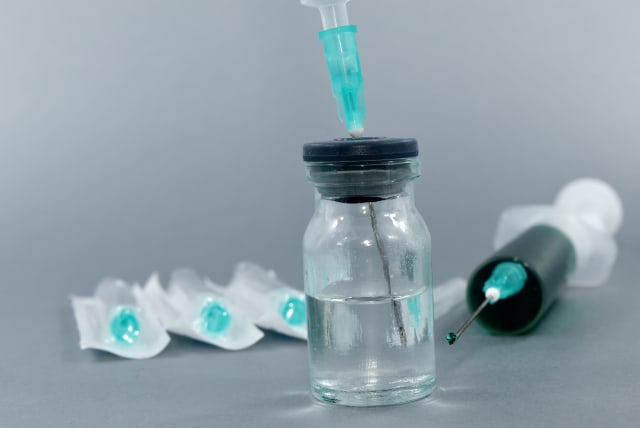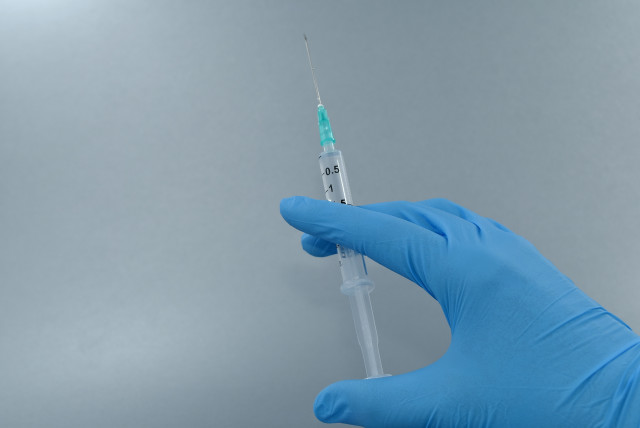Whooping cough outbreak in ultra-Orthodox Israeli population requires urgent vaccinations

More than 225 cases of whooping cough have been reported since the beginning of this year, 13 times more than during the same period last year.
An outbreak of pertussis (whooping cough) among ultra-Orthodox (haredi) children whose parents have declined to take them for vaccinations has worried public health officials and the Health Ministry.
More than 225 cases of whooping cough were reported since the beginning of this year, 13 times more than during the same period last year. Haredi neighborhoods with large families and suspicions of vaccination or annoyance over the large number of shots required during the COVID-19 pandemic have been responsible for the low vaccination rate in this sector.
Newborns should be brought to well-baby (tipat halav) clinics at two months for the first pertussis shot, with more during childhood. Medical students and workers in the healthcare system are urged to get a booster shot because of their exposure to Spike in youngsters infected with whooping cough. The Israel Midwives Association has recommended that all pregnant women get a shot between their 27th and 36th week of gestation to protect the fetus after birth from getting whooping cough.
Occurring only in humans, pertussis is a very contagious respiratory illness spread by coughing and sneezing and caused by a type of bacteria called Bordetella pertussis that attach to the cilia (tiny, hair-like extensions) that line part of the upper respiratory system.
Scientists compared immune response of those who received older vs newer versions of pertussis vaccine
Now, in a new study published in Cell Host & Microbe under the title “T-cell reactivity to Bordetella pertussis is highly diverse regardless of childhood vaccination,” scientists at La Jolla Institute for Immunology (LJI) in California have compared the immune response of individuals who received older versus newer versions of the pertussis vaccine.
The unexpected findings may help explain the recent rise in whooping cough cases and point to potential targets for the next generation of vaccines.
In 1948, the first whole-cell pertussis (wP) vaccine in which recipients were treated with an inactivated version of the entire bacterium was made widely available. While extremely effective in producing immunity, this potent vaccine sometimes caused short-term side effects, leading the US to adopt an acellular pertussis (aP) vaccine in 1996. This vaccine contains only four proteins from B. pertussis.
Clinical cases of whooping cough have risen dramatically in recent decades, and they increasingly affect fully vaccinated teenagers and young adults whose ages coincide with the implementation of the aP vaccine. This has led researchers to wonder whether the protection provided by the aP vaccine is somehow less effective than that of the older wP vaccine.
SCIENTISTS HAVE characterized human T-cell reactivity to the four main antigens present in the aP vaccine, but they haven’t had a clear picture of the human immune response to other B. pertussis antigens.
For the new study, scientists in the lab of biological sciences Prof. Alessandro Sette at the university set out to map the landscape of T-cell reactivity against the entire B. pertussis proteome. This closer look at T-cell reactivity would then help the researchers determine whether there are differences in the breadth, magnitude, and type of immune response between individuals who received wP versus aP vaccines.
To do this, the team took blood samples from adults vaccinated with either wP or aP vaccines who had never been diagnosed with whooping cough. They characterized the response of participants’ T cells to more than 3,000 proteins encoded in the genome and found that the cells from those treated with the aP vaccine showed responsiveness to the four B. pertussis antigens present in that vaccine, but that the overall pattern and magnitude of T-cell responses to aP and non-aP vaccine antigens were similar regardless of which vaccine the individual had received.“We were really surprised to see that,” recalled Sette. “How were these individuals showing immunity to so many antigens not present in the vaccine?” He suggested that the aP vaccine probably produces an immune response to the four main antigens that is effective enough to prevent severe disease but is not very good at preventing subclinical infections. This would cause a large number of people to unknowingly become infected and act as carriers of B. pertussis and spread the bacteria to those more vulnerable to the disease.
The scientists wrote that new vaccines that teach the immune system to target an additional set of B. pertussis antigens could be developed to either replace or supplement the current aP vaccine.
Until these next-generation vaccines can be designed, clinically tested and distributed, people are encouraged to take advantage of currently available measures to prevent the spread of whooping cough. Because pertussis is so easily transmitted by coughing and close contact, the scientists concluded that everyone is a potential carrier, so it is vital that children and relevant adults continue to get vaccinated and boosted to protect the infants, children, seniors, and immunocompromised individuals.
Jerusalem Post Store
`; document.getElementById("linkPremium").innerHTML = cont; var divWithLink = document.getElementById("premium-link"); if (divWithLink !== null && divWithLink !== 'undefined') { divWithLink.style.border = "solid 1px #cb0f3e"; divWithLink.style.textAlign = "center"; divWithLink.style.marginBottom = "15px"; divWithLink.style.marginTop = "15px"; divWithLink.style.width = "100%"; divWithLink.style.backgroundColor = "#122952"; divWithLink.style.color = "#ffffff"; divWithLink.style.lineHeight = "1.5"; } } (function (v, i) { });

